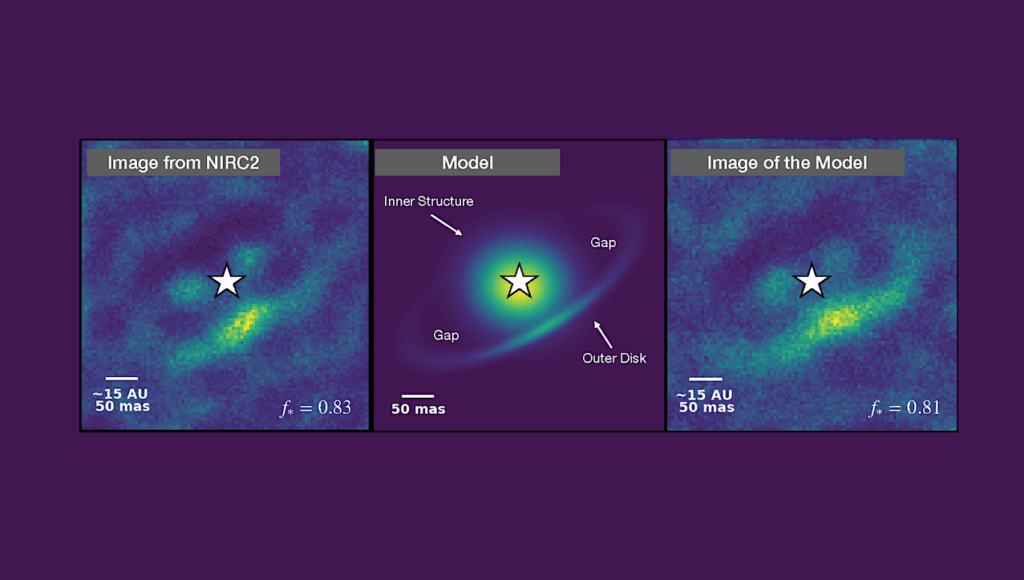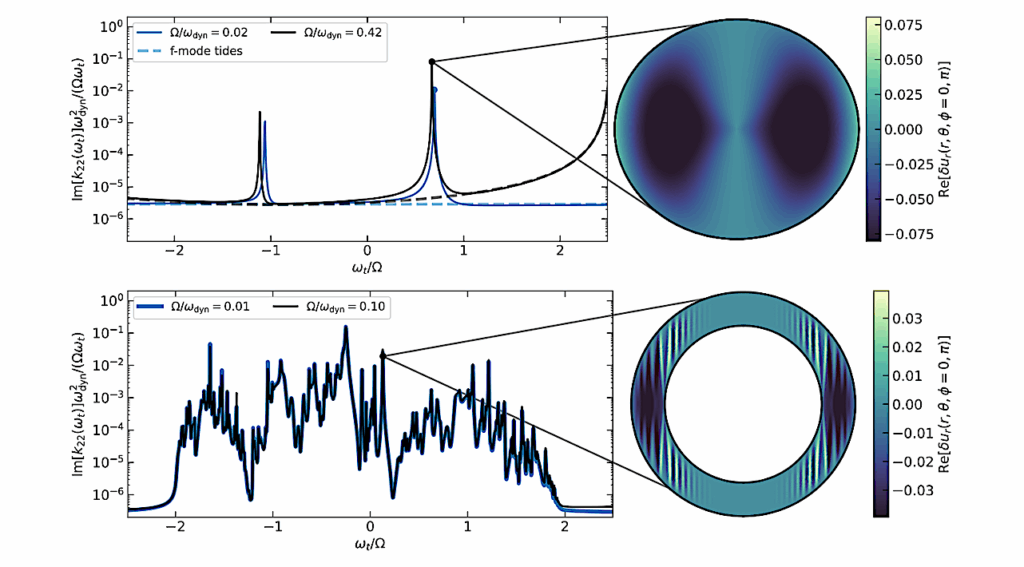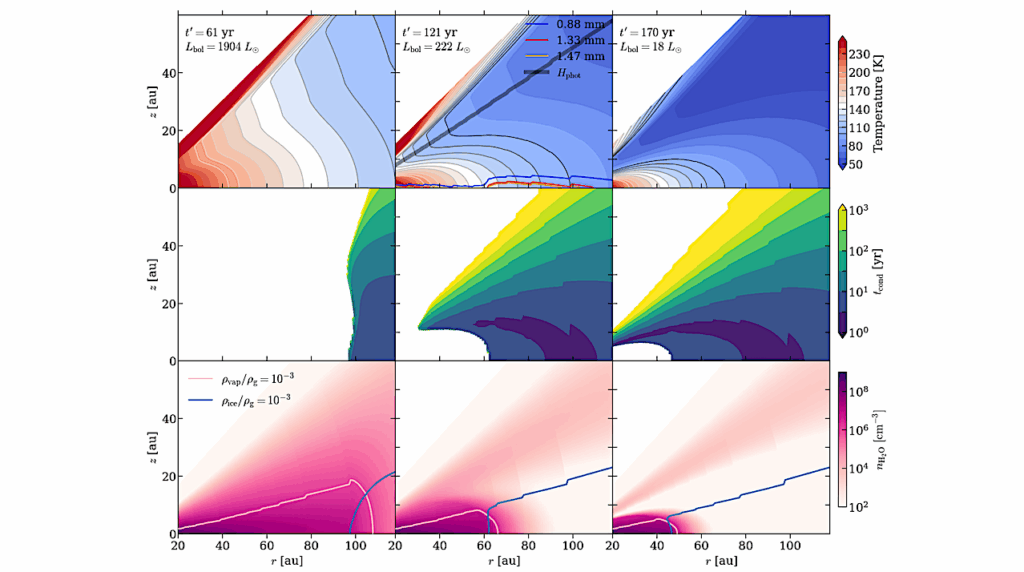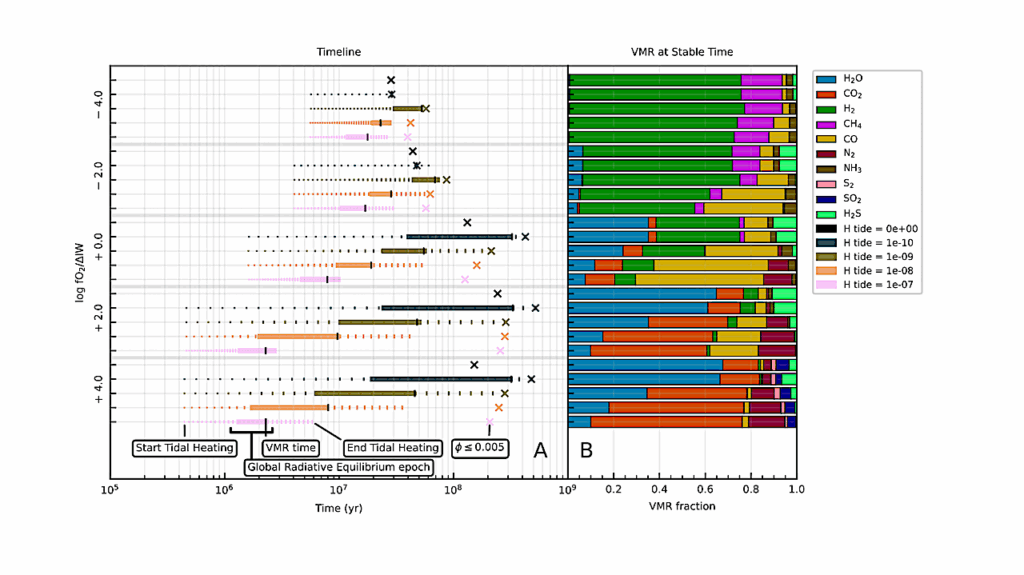A Dust-Trapping Ring in the Planet-Hosting Disk of Elias 2-24
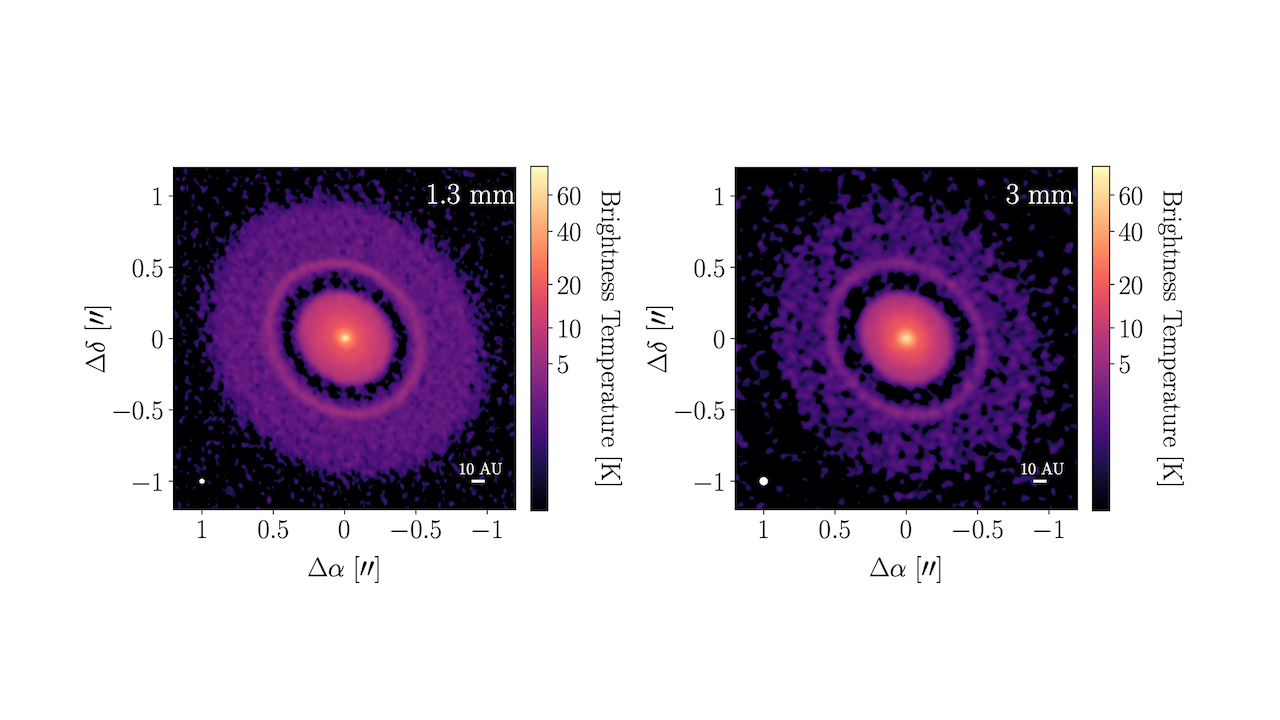
Rings and gaps are among the most widely observed forms of substructure in protoplanetary disks.
A dust-trapping ring would provide a promising environment for solid growth and possibly planetesimal production via the streaming instability.
We present evidence of dust trapping in the bright ring of the planet-hosting disk Elias 2-24, from the analysis of 1.3 mm and 3 mm ALMA observations at high spatial resolution (0.029 arcsec, 4.0 au).
We leverage the high spatial resolution to demonstrate that larger grains are more efficiently trapped and place constraints on the local turbulence (8×10−4<αturb<0.03) and the gas-to-dust ratio (Σg/Σd<30) in the ring.
Using a scattering-included marginal probability analysis we measure a total dust disk mass of Mdust=13.8+0.7−0.5×10−4 M⊙. We also show that at the orbital radius of the proposed perturber, the gap is cleared of material down to a flux contrast of 10−3 of the peak flux in the disk.

Radial profiles of the dust properties in the disk around Elias 24. The left column shows our results for p = 2.5, while the right column shows p = 3.5. The orbital radius of the candidate companion from Jorquera et al. (2021) is shown with a green dashed line and the ring location is shown with a magenta dashed line. Top: The dust surface density profile. Notice the increase in surface density at the ring location and the significant decrease in the gap. Center: The maximum grain size profile, which also increases at the ring location, indicating potential grain growth in the ring. Bottom: The temperature profile distributions. The blue dotted line shows the prior temperature profile given by Equation 1, with 1σ Gaussian standard deviations shown as blue dashed lines. — astro-ph.EP
Adolfo S. Carvalho, Laura M. Perez, Anibal Sierra, Maria Jesus Mellado, Lynne A. Hillenbrand, Sean Andrews, Myriam Benisty, Tilman Birnstiel, John M. Carpenter, Viviana V. Guzman, Jane Huang, Andrea Isella, Nicolas Kurtovic, Luca Ricci, David J. Wilner
Comments: 18 pages, 12 figures, accepted to ApJ
Subjects: Earth and Planetary Astrophysics (astro-ph.EP); Solar and Stellar Astrophysics (astro-ph.SR)
Cite as: arXiv:2406.12819 [astro-ph.EP] (or arXiv:2406.12819v1 [astro-ph.EP] for this version)
https://doi.org/10.48550/arXiv.2406.12819
Focus to learn more
Submission history
From: Adolfo Carvalho
[v1] Tue, 18 Jun 2024 17:37:41 UTC (8,926 KB)
https://arxiv.org/abs/2406.12819
astrobiology



